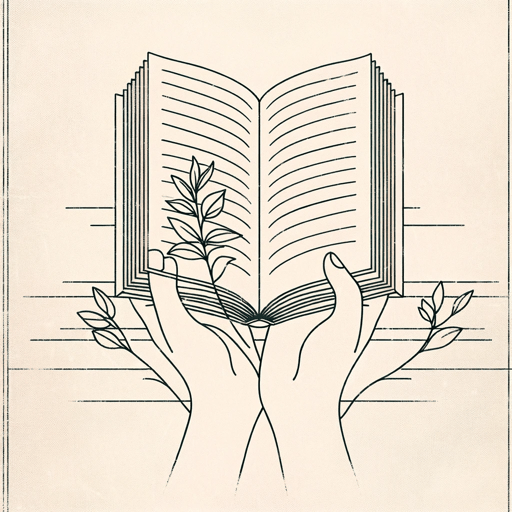18 pages • 36 minutes read
Pat MoraOde to Teachers
Fiction | Poem | Adult | Published in 2010A modern alternative to SparkNotes and CliffsNotes, SuperSummary offers high-quality Study Guides with detailed chapter summaries and analysis of major themes, characters, and more.
Summary and Study Guide
Overview
Pat Mora’s “Ode to Teachers,” included in her volume of love poems written for teenagers, Dizzy in Your Eyes: Poems About Love (2010), is an encomium, or poem of praise, to an anonymous teacher from the speaker’s childhood. The speaker of the poem celebrates their childhood teacher—whether from primary school or high school is unclear—by recounting specific memories of interactions that they recall as having contributed to their growth and development both as a student and as a human being. The poem uses its rehearsal of childhood memories to examine the ways our personalities are formed through interactions with others that leave a lasting impression on our sensibility.
Both the sentiment and the style of “Ode to Teachers” reflect Mora’s background as a university administrator, museum director, popular speaker, consultant, and teacher dedicated to promoting values of inclusivity. The poem’s clear and unambiguous message likewise caters to its volume’s target audience of high school students and teenagers from various backgrounds. Its emphasis on student centered learning aligns “Ode to Teachers” with curricular goals promoted within a wide range of administrative contexts. While the ode is a poetic subgenre with a long history stretching back to ancient poets like Pindar and Horace, and later rejuvenated by the Romantics, Mora plays loose with the ode’s formal conventions of strophe, antistrophe, and epode, favoring instead the term’s more general sense of a formal address to someone or something, in this case the teacher. In this respect, “Ode to Teachers” could be identified as an Irregular Ode.
Poet Biography
Pat Mora was born in 1942 in El Paso, Texas. A major promoter of both childhood literacy and Hispanic literature, Mora has claimed that the borderland experiences of her childhood (Mora’s grandparents migrated from northern Mexico to the border town of El Paso) shaped much of her approach to writing, such as her use of bilingual “code-switching” in poems written alternatingly in English and Spanish. Mora graduated from the University of Texas at El Paso and eventually received honorary doctorates from the State University of New York, Buffalo, and North Carolina State University. Mora began writing professionally in the 1980s, at a time when the value of multiculturalism was gaining significant traction within American culture.
A significant feature of Mora’s literary career has been her contribution to children’s literature and its surrounding culture. In 1996, Mora founded Children’s Day, Book Day, or, in Spanish, El dia de los ninos, El dia de los libros. Mora took her inspiration for this initiative from the Mexican tradition of celebrating April 30th as El dia de ninos. The Book Day literacy initiative promotes collaboration between national and state library and literacy organizations, educators, and presses. The Dia, as it’s known for short, gained the support of the Association for Library Sources to Children in 2004. Mora’s own writing for children and young adults includes the books Pablo’s Tree; Love to Mama: A Tribute to Mothers; Library for Juana: The World of Sor Juana Ines; The Beautiful Lady: Our Lady of Guadalupe, for which she received the International Latino Book Award; Bookjoy, Wordjoy; and many others.
Mora has received a wide range of awards and accolades for her work. In addition to being granted the Civitella Ranieri Fellowship and a Distinguished Alumni Award from the University of Texas at El Paso, she was made an honorary member of the American Library Association. Mora has advocated tirelessly for a concept she calls “bookjoy,” a term she coined herself. Bookjoy refers to the sense of joy that one experiences while reading—or writing—a book. In her public speaking and consultation work aimed at propagating bookjoy among young learners and teachers alike, themes she explores in her recent book ZING! Seven Creativity Practices for Educators and Students, Mora introduces such practical strategies as “value your creative self” and “begin your project.” Mora has argued that in order to interest young people in reading and writing, particularly at a time when a number of distractions and other technological lures abound, educators should be creative.
Poem Text
Mora, Pat. “Ode to Teachers.” 2010. Poetry Foundation.
Summary
Mora wrote the five stanzas that make up “Ode to Teachers” in unrhymed free verse. The first four stanzas present memories the speaker recounts of childhood interactions with a teacher, while the final stanza provides a summary of the impact these exchanges have had. The first stanza contrasts the speaker’s memory of her shyness—visible in their avoiding eye contact—with the teacher’s supportive warmth and kindness, which the poem presents through the image of the latter’s “smile” (Line 7) compared to a “soft light” (Line 8). Mora’s lineation—or use of line breaks—draws the reader’s attention to the speaker’s avoidance of being seen, lending weight to the eventual moment of mutual encounter that centers on the teacher’s smile.
This moment of encounter prompts the second stanza’s recollections of the teacher’s encouraging remarks. In line with the teacher’s invitations to the childhood speaker to participate in the classroom discussion, this stanza introduces several embellished images, such as “neon certainties” (Line 13), “thorny doubts” (Line 14), and “tangled angers” (Line 14). Unfortunately, the teacher’s vivid phrases do not yet inspire the young speaker to overcome their tendency to “hid[e] inside” (Line 15). This stanza also introduces a sense of changing timescales, contrasting the “weeks” (Line 15) of hiding with the “first day” (Line 2) of Stanza 1.
The third stanza suggests growing forms of intimacy between the speaker and the teacher. For example, the speaker “reread[s]” (Line 16) the teacher’s comments on their written work multiple times, either implying fascination, their effort to integrate the feedback, or both. The teacher’s familiarity in “whisper[ing]” (Line 19) supportive comments in the students’ ear likewise conveys the sense of a growing rapport between the two. The teachers’ rallying remarks communicate the larger stakes of the speaker’s development. We learn that the teacher feels their “stories” (Line 21) and “questions” (Line 22) will lead others to “new vistas” (Line 24).
With the fourth stanza, we see a shift in the speaker’s shyness, as the teacher’s enduring “faith” (Line 25) in their pupil bears fruit in the form of the latter’s “courage” (Line 26). The speaker expresses this newly found courage somewhat counterintuitively, neither offering the teacher a “a note or apple or flowers” (Line 29), but instead raising her hand and participating in the classroom discussion. In the final stanza, the speaker turns to reflect on the impact this experience has had, locating the teacher’s “smile” (Line 31) and “faith” (Line 32), tokens of their classroom interaction, along with other cherished memories such as “sunrise[s]” (Line 36) and the smell of “gingerbread” (Line 38).
Related Titles
By Pat Mora





